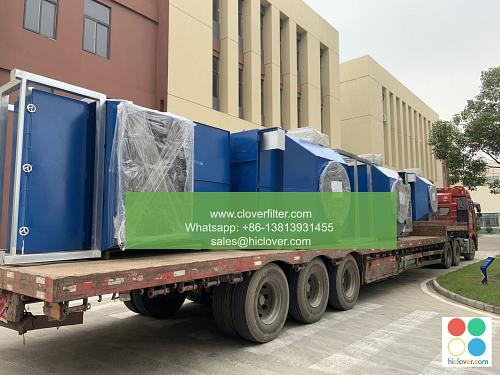Air Filter Design: A Beginner’s Guide

Air Filter Design: A Beginner’s Guide
What is Air Filtration?
Air filtration is an essential process in various industries, including HVAC, industrial, and medical applications. The goal of air filtration is to remove impurities, allergens, and contaminants from the air to create a cleaner and healthier environment. In this article, we will delve into the world of air filter design, exploring the various types, materials, and applications of air filters.
Principle of Air Filtration
The principle of air filtration is based on the concept of diffusion and sedimentation. Air pollutants, such as dust, pollen, and other particulate matter, are attracted to the filter material and stuck to it, while the clean air passes through the filter. The process is reversible, and the filter can be easily cleaned or replaced when clogged.
Types of Air Filter Designs
There are several types of air filter designs, each with its unique characteristics and applications:
Mechanical Air Filters
Mechanical air filters use a physical barrier to capture particles and contaminants. They are often used in residential and commercial HVAC systems to remove large particles, such as dust, lint, and hair.
Activated Carbon Air Filters
Activated carbon filters use activated carbon, a form of carbon with a high surface area, to capture VOCs (volatile organic compounds) and pollutants. They are commonly used in industrial and residential applications to remove unpleasant odors and gases.
HEPA Air Filters
High-Efficiency Particulate Air (HEPA) filters are designed to capture 99.97% of particles as small as 0.3 microns. They are widely used in medical facilities, aircraft, and high-tech industries to maintain a clean and controlled environment.
Electrostatic Air Filters
Electrostatic air filters use an electric charge to attract and trap particles, such as dust, pollen, and smoke. They are often used in industrial and commercial applications, including laboratories and cleanrooms.
Materials Used in Air Filter Design
Air filters are made from a variety of materials, including:
Fiberglass
Fiberglass is a common material used in air filter design, particularly in mechanical air filters. It is inexpensive and effective at capturing larger particles.
Activated Carbon
Activated carbon is used in air filters designed to capture VOCs and other gases.
Melt-Blown Fibers
Melt-blown fibers are used in HEPA air filters to capture small particles and pollutants.
Electret Materials
Electret materials are used in electrostatic air filters to attract and trap particles.
Applications of Air Filter Design
Air filter design is used in various applications, including:
HVAC Systems
Air filters are used in heating, ventilation, and air conditioning (HVAC) systems to remove dust, pollen, and other impurities from the air.
Industrial Applications
Air filters are used in industries such as manufacturing, mining, and construction to remove dust, fumes, and other pollutants.
Medical Facilities
Air filters are used in medical facilities to maintain a clean and controlled environment, reducing the risk of airborne infections and diseases.
Aerospace Industries
Air filters are used in the aerospace industry to remove pollutants and contaminants from the air, ensuring a clean and healthy environment for passengers and crew.
Conclusion
Air filter design is a complex process that requires a deep understanding of the various materials, types, and applications of air filters. By understanding the principles of air filtration and the different types of air filters, you can select the right air filter for your specific needs. Whether you’re working in the HVAC, industrial, or medical fields, it’s essential to choose the right air filter to ensure a clean and healthy environment.
I’m here to help! What would you like to talk about or ask? I can assist with questions, provide information, offer suggestions, or simply have a fun conversation. What’s on your mind?

